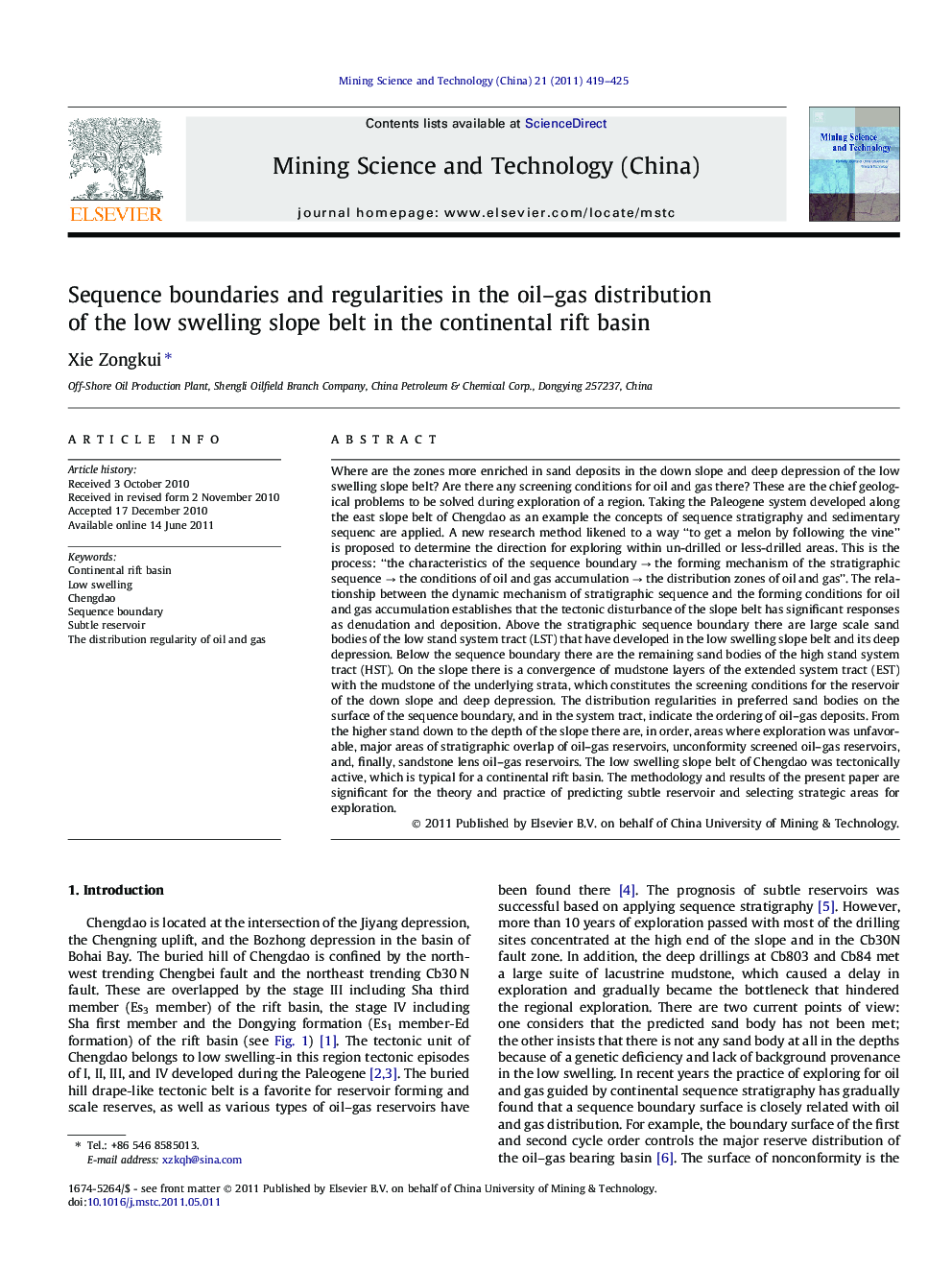| کد مقاله | کد نشریه | سال انتشار | مقاله انگلیسی | نسخه تمام متن |
|---|---|---|---|---|
| 294547 | 511486 | 2011 | 7 صفحه PDF | دانلود رایگان |

Where are the zones more enriched in sand deposits in the down slope and deep depression of the low swelling slope belt? Are there any screening conditions for oil and gas there? These are the chief geological problems to be solved during exploration of a region. Taking the Paleogene system developed along the east slope belt of Chengdao as an example the concepts of sequence stratigraphy and sedimentary sequenc are applied. A new research method likened to a way “to get a melon by following the vine” is proposed to determine the direction for exploring within un-drilled or less-drilled areas. This is the process: “the characteristics of the sequence boundary → the forming mechanism of the stratigraphic sequence → the conditions of oil and gas accumulation → the distribution zones of oil and gas”. The relationship between the dynamic mechanism of stratigraphic sequence and the forming conditions for oil and gas accumulation establishes that the tectonic disturbance of the slope belt has significant responses as denudation and deposition. Above the stratigraphic sequence boundary there are large scale sand bodies of the low stand system tract (LST) that have developed in the low swelling slope belt and its deep depression. Below the sequence boundary there are the remaining sand bodies of the high stand system tract (HST). On the slope there is a convergence of mudstone layers of the extended system tract (EST) with the mudstone of the underlying strata, which constitutes the screening conditions for the reservoir of the down slope and deep depression. The distribution regularities in preferred sand bodies on the surface of the sequence boundary, and in the system tract, indicate the ordering of oil–gas deposits. From the higher stand down to the depth of the slope there are, in order, areas where exploration was unfavorable, major areas of stratigraphic overlap of oil–gas reservoirs, unconformity screened oil–gas reservoirs, and, finally, sandstone lens oil–gas reservoirs. The low swelling slope belt of Chengdao was tectonically active, which is typical for a continental rift basin. The methodology and results of the present paper are significant for the theory and practice of predicting subtle reservoir and selecting strategic areas for exploration.
Journal: Mining Science and Technology (China) - Volume 21, Issue 3, May 2011, Pages 419–425